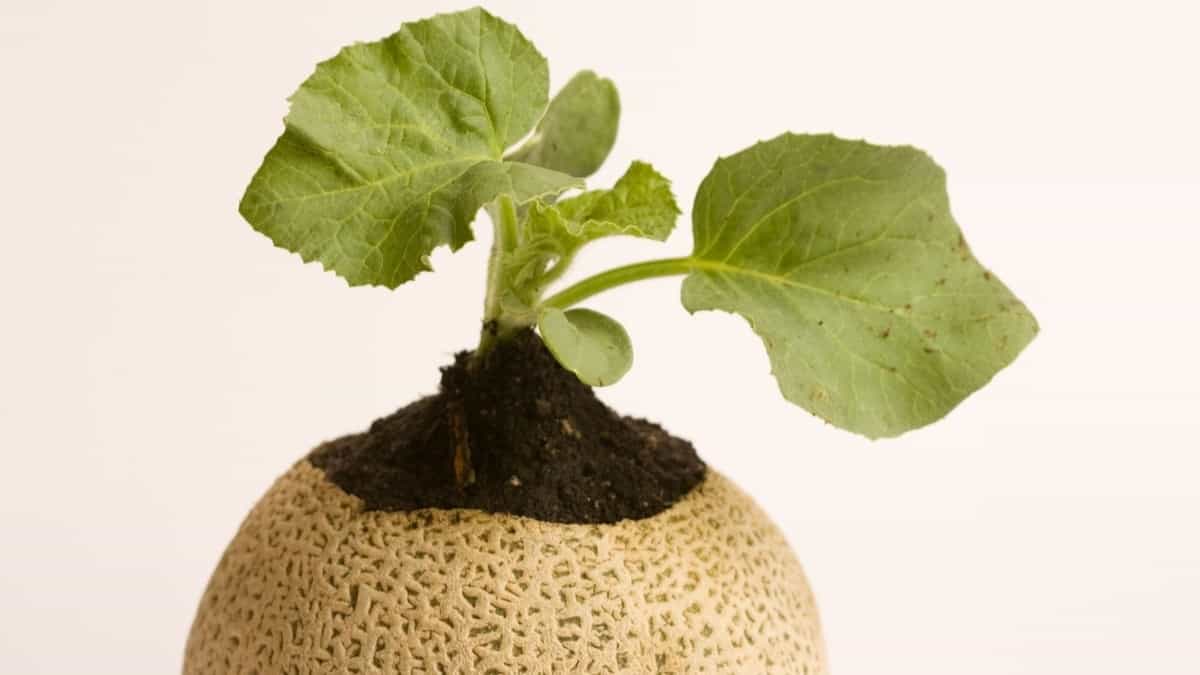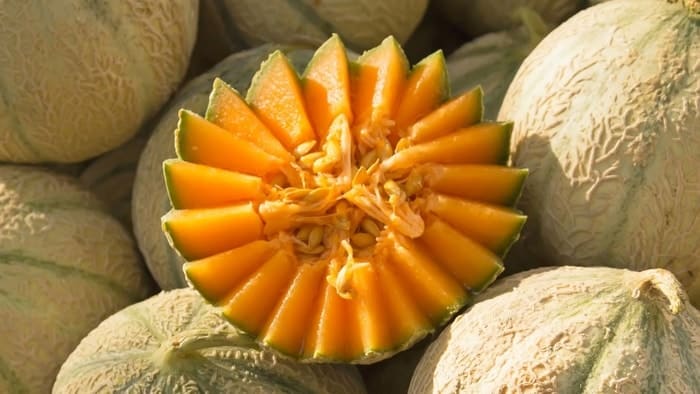Last Updated on January 25, 2022 by
Do you know when to plant cantaloupe, or did you plant yours hoping it would bear you its sweet fruits but ended up disappointing you?
The cantaloupe plant is also known as muskmelon, is popular and grows in many home gardens. It is easy to recognize this fruit by its net-like rind and sweet orange flesh color. Cantaloupes are closely related to squash, cucumbers, and pumpkins and share the same growing conditions.
Summer is always the best time to enjoy your supply of fresh cantaloupes. Colorful and bright, these fruits are a perfect addition to the beautiful weather.
This member of the melon family can grow with little maintenance in your garden. To know how to do this, follow us as we break down the journey of growing your own muskmelons.
When to Plant Cantaloupe
Cantaloupes or muskmelon is a very tender warm-weather plant, and it thrives very hot to warm weather.
Plant your cantaloupe seeds in the garden or set out the transplants 3 to 4 weeks after the last average frost date in the spring.
Sow your cantaloupe seeds indoors about 6 weeks before transplanting seedlings into the garden. Use biodegradable peat or paper pots that can be set directly into the garden.
Keep your seedlings or seeds away from frost as they do not tolerate frost.
Cantaloupe Plant Stages and Growing
Now that you know when to plant let’s look at some important tips for growing your own muskmelons.
Indoor Starting The Seeds
Cantaloupes require a long growing season, so it’s best to start them indoors at least 3 weeks before the last frost date. Sow 3 seeds per pot or germination cell, ½ inch deep. Keep your soil medium moist while waiting for germination to happen. A good amount of heat produces better germination rates. Keep the soil between 80-90 degrees using a heat mat if necessary.
Once your seeds germinate, lower the soil temperature slightly to mid-70 degrees for 1 to 2 weeks and decrease the amount of water you give.
Thin the seedlings to leave one plant per pot or cell. When you notice the first true leaves, reduce watering but do not allow the plant to dry out. Harden your plants by exposing them to outdoor conditions.
Late spring, transplant your seedlings to their permanent location. Choose an overcast day to minimize wilting and enable your young plants to strengthen.
Outdoor Cantaloupe Seeds Direct Sowing
Muskmelon seeds can be sown directly into the garden if you have a long hot growing season. Sow your seeds 1 to 2 weeks after the average last frost when the soil is 70 degrees F or warmer. Sow your seeds ½ inch deep and 6 seeds per hills. Space them 1 foot apart in rows and 5 feet apart plant to plant—thin 2 to 3 plants per hill to allow the remaining to grow strong.
Choose a Good Planting Site
Cantaloupe prefers well-drained soils that are warm and high in organic matter with pH 6.5 to 7.5. Consistent and adequate moisture is needed until fruit is about the size of a tennis ball. Ensure that your soil temperatures are below 50 degrees F for slow growth. You can use black plastic and fabric row covers to speed up the soil warming. Sandy or textured soils are best because they warm quickly in spring.
Maintaining Your Cantaloupe Plant
- Cantaloupe transplants are delicate the same way other plants are. Be sure to provide these transplants with special care to ensure they are growing well.
- Mulch the plants after the soil have warmed up to help maintain consistent moisture and suppress weeds. You can use a fabric cover but remove them during flowering to allow pollination by bees. Good pollination is critical to the setting of the fruit.
- During pollination, provide your plants with plenty of moisture until they are grown to the size of a tennis ball, watering the soil only when it is dry and leaves show signs of wilt.
- To prevent insect damage on the developing fruits, place your melon plants on pieces of wood.
- You can use trellis to provide support on your cantaloupes, supporting these fruits with slings made from netting, pantyhose, or fabric. Trellis provides proper air circulation around plants and helps reduce foliar disease problems. Trellis support method is best used for the smaller fruit varieties.
- For large plantings commonly affected by winds, leave a strip of rye cover crop every second or third row perpendicular to prevailing winds.
- Do not plant any cucumber family members among the cantaloupe to reduce disease and insect problems. In addition, avoid planting these cucumber members in the same spot two years in a row.
- Never allow your cantaloupes to dry during the growing season; they are not tolerant to drought and can easily die. Likewise, be cautious not to overwater your plants as this will negatively affect the taste and flavor of your fruits later on. The rule is to keep the soil moist but not soggy.
How to Tell If a Cantaloupe Is Ripe
- Vine-grown cantaloupes ripen 35 to 45 days after pollination, but it depends on the weather conditions.
- When you observe the skin color turning to creamy yellow-beige and the net surface becoming too rough, and the tendrils near the fruit turning brown and dry, know that the fruit is ripe.
- Please do not wait until the fruit falls off the vine; instead, watch for signs that it’s ready to be harvested. To harvest it, gently twist the fruit from the stem; it easily slips off.
- Do not harvest an unripe cantaloupe from its vine as it does not ripen after harvesting. If you notice the ones sold in the stores with little stems still attached to them, they were probably harvested too early and won’t be very sweet.
- Once harvested, store them at 45 to 50 degrees F for about one to two weeks.
When To Plant Cantaloupe Conclusion
Having learned when to plant cantaloupe, there are other important points you need to consider.
The key to a sweet melon is its sugar content made by the leaves. Therefore, anything that hurts its leaves also hurts the quality of the fruit.
Look out for fungal leaf infection that spreads rapidly and affects both the leaves and fruits. Treat fungal leaf infection with fungicides approved in your state.
Some cantaloupes are tolerant to powdery mildew, while others are not. If you are not sure, seek advice early.
With proper care and maintenance, cantaloupe will grow to provide you with many sweet fruits that you will enjoy for a long time.
Learn more about: How Many Raspberry Canes do I Need?
Caroline is a gardener who loves to get down to the nitty–gritty of gardening. She proudly proclaims herself as a ‘dirt worshipper‘ and can often be found deep in the garden, covered in soil and singing to her plants. As a self–proclaimed ‘plant whisperer‘, Caroline believes that plants need love and attention just like any other living thing, and she loves to give them both. When she‘s not tending to her garden, you can often find her researching the latest gardening trends, or teaching others how to make their gardens thrive



